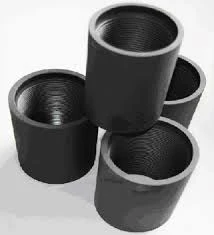- Afrikaans
- Albanian
- Amharic
- Arabic
- Armenian
- Azerbaijani
- Basque
- Belarusian
- Bengali
- Bosnian
- Bulgarian
- Catalan
- Cebuano
- Corsican
- Croatian
- Czech
- Danish
- Dutch
- English
- Esperanto
- Estonian
- Finnish
- French
- Frisian
- Galician
- Georgian
- German
- Greek
- Gujarati
- Haitian Creole
- hausa
- hawaiian
- Hebrew
- Hindi
- Miao
- Hungarian
- Icelandic
- igbo
- Indonesian
- irish
- Italian
- Japanese
- Javanese
- Kannada
- kazakh
- Khmer
- Rwandese
- Korean
- Kurdish
- Kyrgyz
- Lao
- Latin
- Latvian
- Lithuanian
- Luxembourgish
- Macedonian
- Malgashi
- Malay
- Malayalam
- Maltese
- Maori
- Marathi
- Mongolian
- Myanmar
- Nepali
- Norwegian
- Norwegian
- Occitan
- Pashto
- Persian
- Polish
- Portuguese
- Punjabi
- Romanian
- Russian
- Samoan
- Scottish Gaelic
- Serbian
- Sesotho
- Shona
- Sindhi
- Sinhala
- Slovak
- Slovenian
- Somali
- Spanish
- Sundanese
- Swahili
- Swedish
- Tagalog
- Tajik
- Tamil
- Tatar
- Telugu
- Thai
- Turkish
- Turkmen
- Ukrainian
- Urdu
- Uighur
- Uzbek
- Vietnamese
- Welsh
- Bantu
- Yiddish
- Yoruba
- Zulu
seamless pipe
Understanding Seamless Pipe Applications, Benefits, and Manufacturing Processes
Seamless pipes are an essential component in various industries, known for their robust construction and high efficiency. Unlike welded pipes, seamless pipes are manufactured without any joints, making them ideal for applications where strength and reliability are paramount. This article outlines the characteristics, benefits, manufacturing processes, and applications of seamless pipes.
Characteristics of Seamless Pipes
Seamless pipes are produced from a solid round steel “billet,” which is heated and then pierced to create a hollow tube. This process ensures that there are no seams along the length of the pipe, which can be a point of failure under pressure. The absence of welding seams enhances their ability to withstand internal and external pressures, making them suitable for high-stress applications.
The most commonly used materials for seamless pipes are carbon steel, alloy steel, and stainless steel. Each material offers unique properties tailored to specific applications. For instance, stainless steel seamless pipes are known for their corrosion resistance, while carbon steel options provide excellent strength and durability.
Manufacturing Process
The manufacturing of seamless pipes involves several key steps
1. Heating The process begins with heating the steel billets in a furnace. Typically, temperatures reach around 1200 degrees Celsius (over 2000 degrees Fahrenheit).
2. Piercing Once heated, the billet is pierced using a sharp tool to create a hollow tube. This step is crucial as it transforms the solid piece into a workable structure.
3. Rolling The pierced tube undergoes further elongation through a rolling mill. This stage shapes the pipe to the required dimensions.
4. Expansion After rolling, the pipe is expanded and reduced to achieve the desired wall thickness and diameter.
5. Heat Treatment The next step often involves heat treatment to enhance the mechanical properties of the pipe. Processes include normalizing, quenching, and tempering.
6. Testing Finally, rigorous testing is conducted to ensure the pipe meets industry standards. This includes hydrostatic testing, ultrasonic testing, and visual inspections.
The entire process can vary based on the pipe size, material, and intended application, making it crucial for manufacturers to adhere strictly to specifications.
Benefits of Seamless Pipes
seamless pipe

Seamless pipes offer numerous advantages, making them a preferred choice in many industries
- Strength and Durability The lack of a seam makes these pipes incredibly strong and capable of withstanding high pressures without failing.
- Corrosion Resistance Specifically, stainless steel seamless pipes offer superior resistance to corrosion, making them ideal for harsh environments.
- Versatility They can be used for various purposes, including high-temperature applications, making them suitable for sectors like oil and gas, petrochemicals, and construction.
- Improved Flow The smooth interior surface enhances fluid flow, minimizing turbulence and pressure drops.
- Consistency in Quality The manufacturing process allows for more uniformity in wall thickness and diameter, ensuring consistent load-bearing capabilities.
Applications of Seamless Pipes
The applications of seamless pipes are extensive, covering a wide range of industries. Some notable uses include
- Oil and Gas Industry Seamless pipes are essential for transporting oil and gas, especially in high-pressure environments.
- Water and Sewage Their strength makes them suitable for water distribution systems and sewage treatment applications.
- Power Generation Used in power plants, seamless pipes can withstand the high pressures and temperatures of steam applications.
- Construction They are used in various structural applications, providing the strength needed for support beams, scaffolding, and more.
- Aerospace In aviation, seamless pipes are used for hydraulic lines and other applications requiring lightweight, high-strength materials.
Conclusion
Seamless pipes represent a critical component in modern engineering and manufacturing. Their strength, durability, and versatility make them ideal for a plethora of applications across various industries. As technology and manufacturing processes continue to evolve, seamless pipes will undoubtedly play an even more significant role in supporting infrastructure and innovation worldwide. Whether in oil rigs, power plants, or construction sites, understanding the importance of seamless pipes can lead to better decisions in material selection and project design.
-
Tubing Pup Joints: Essential Components for Oil and Gas OperationsNewsJul.10,2025
-
Pup Joints: Essential Components for Reliable Drilling OperationsNewsJul.10,2025
-
Pipe Couplings: Connecting Your World EfficientlyNewsJul.10,2025
-
Mastering Oilfield Operations with Quality Tubing and CasingNewsJul.10,2025
-
High-Quality Casing Couplings for Every NeedNewsJul.10,2025
-
Boost Your Drilling Efficiency with Premium Crossover Tools & Seating NipplesNewsJul.10,2025







